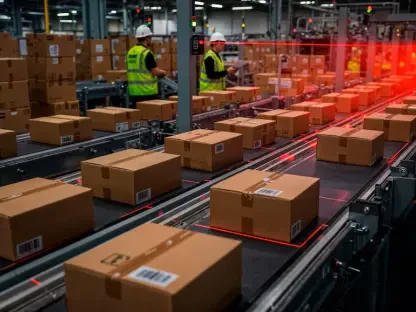With decades of experience in the logistics industry, spanning across supply chain and delivery, Rohit Laila shares his insights on the transformative role of AI and its growing importance in the air cargo sector. Rohit, who is also passionate about technology and innovation, delves into how AI is reshaping various aspects of demand forecasting, routing, and customer service in the industry.
How is artificial intelligence transforming the air cargo industry?Artificial intelligence is revolutionizing the air cargo industry by leveraging machine learning and real-time data analysis. AI-driven forecasting helps airfreight operators optimize efficiency, reduce costs, and enhance customer satisfaction. Unlike traditional forecasting methods that rely heavily on historical data and manual processes, AI incorporates predictive analytics to process vast amounts of data, including seasonal fluctuations and external factors such as weather and geopolitical events, thus enhancing accuracy.
What specific aspects of demand forecasting are being reshaped by AI in air cargo?AI reshapes demand forecasting by introducing predictive analytics that consider a wide range of variables, enabling more accurate predictions. This includes integrating real-time data from various sources like IoT-enabled tracking devices and global supply chain analytics, helping carriers and freight forwarders anticipate demand fluctuations more precisely.
Can you explain the difference between traditional forecasting methods and AI-driven forecasting?Traditional forecasting methods rely primarily on historical data and manual processes, which often fail to account for sudden market shifts. In contrast, AI-driven forecasting utilizes predictive analytics and processes a vast array of data points, including real-time data, to provide a more dynamic and accurate forecast.
How does AI incorporate real-time data into its forecasting models?AI incorporates real-time data by collecting information from various sources such as IoT-enabled tracking devices, air traffic management systems, and supply chain analytics. This data is then processed and analyzed to provide up-to-date insights, which help in making more accurate demand forecasts and proactive adjustments.
What types of real-time data sources are commonly used in AI-driven air cargo forecasting?Common real-time data sources include IoT devices that track shipments, air traffic management systems that provide information about flight schedules and status, weather data, and market conditions from global supply chain analytics. These sources collectively enable a comprehensive view of the current state, aiding in precise demand forecasting.
How does integrating real-time data from sources like IoT devices and air traffic management systems benefit air cargo operators?Integrating real-time data allows air cargo operators to anticipate and react to changes more effectively. This leads to better decision-making, such as adjusting routes and inventory in response to sudden disruptions. It improves operational efficiency, optimizes cargo loads, and enhances customer service by providing more accurate delivery estimates.
In what ways can AI-powered routing platforms optimize the shipping process?AI-powered routing platforms optimize the shipping process by evaluating factors like shipment-ready times, aircraft capacity, and driver availability. This allows for efficient route planning and resource allocation, ensuring that carriers can meet changing demand patterns proactively.
How do AI-driven demand forecasting tools help with operational efficiency?AI-driven forecasting tools improve operational efficiency by providing accurate demand predictions, enabling better resource planning and utilization. This reduces the likelihood of underutilized capacity and last-minute changes, leading to smoother operations and cost savings.
What financial risks are mitigated by using AI in demand forecasting?By using AI for demand forecasting, financial risks such as underutilized capacity and unanticipated route changes are mitigated. Accurate forecasts help in better planning, reducing wastage and avoiding last-minute adjustments that can be costly.
Could you provide an example of how AI-driven platforms enable dynamic shipment tracking?AI-driven platforms enable dynamic shipment tracking by continuously monitoring shipments and using real-time data to adjust routes and schedules. For example, if a disruption occurs, the system can reroute shipments accordingly to ensure timely delivery, which is crucial for industries like pharmaceuticals.
Why is agility important in industries like pharmaceuticals and e-commerce for air cargo logistics?Agility is crucial because even slight delays can have significant financial and operational impacts in these industries. Timely deliveries are vital for maintaining the quality of pharmaceutical products and meeting the high expectations of e-commerce customers.
How does AI help in reducing supply chain inefficiencies?AI reduces supply chain inefficiencies by providing precise demand forecasts, optimizing routing and capacity planning, and enabling real-time adjustments to operations. This leads to streamlined processes, reduced delays, and better allocation of resources.
What are some capacity management challenges that air cargo operators face?Air cargo operators often struggle to balance demand with available space, leading to inefficiencies such as underutilized capacity or overbooking. Fluctuations in demand and timing issues add to these challenges, making effective capacity management crucial.
How does AI improve decision-making regarding cargo loads and flight scheduling?AI improves decision-making by analyzing historical and real-time data to predict demand fluctuations accurately. This helps in optimizing cargo loads and scheduling flights more effectively, reducing the risk of under or over-utilization.
Do you have any statistics or case studies showing the impact of AI on forecasting error rates and cargo load factors?One major carrier saw its forecasting error rate drop from 20 percent to 14 percent, leading to better capacity utilization and an 8 percent improvement in cargo load factors. This demonstrates how AI-driven models can significantly enhance efficiency and load management.
How can AI personalize services and improve customer experience in air cargo?AI personalizes services by analyzing customer behavioral data and past shipment histories. This allows for more accurate delivery estimates, proactive communication about potential delays, and customized service offerings, leading to improved customer satisfaction.
What role does AI play in offering accurate delivery estimates and communicating potential delays to customers?AI analyzes multiple data points and real-time information to provide accurate delivery estimates. It also proactively identifies potential delays and communicates these to customers in advance, enhancing transparency and trust.
How does reducing manual workloads with AI contribute to higher customer retention rates?Reducing manual workloads with AI allows for more efficient operations, leading to timely and reliable services. This increases customer satisfaction and retention rates by consistently meeting or exceeding customer expectations.
What cost savings have logistics providers experienced by implementing AI-powered solutions?Logistics providers have seen up to 15 percent cost savings through the implementation of AI-powered solutions. These savings come from improved operational efficiency, reduced forecasting errors, better capacity utilization, and fewer disruptions.
What are some challenges associated with implementing AI in air cargo forecasting?Challenges include the need for high-quality, integrated data, significant investments in digital infrastructure, and continuous updates to AI algorithms to account for evolving market trends. Data privacy and security concerns also pose challenges.
Why is high-quality and integrated data important for the effectiveness of AI models?High-quality and integrated data are crucial because the accuracy of AI models depends on the reliability and comprehensiveness of the input data. Poor data quality can lead to inaccurate forecasts and suboptimal decision-making.
How frequent and extensive are the updates required for AI models to address evolving market trends?AI models require regular updates, which can be frequent and extensive, to stay aligned with the latest market trends and disruptions. This ensures that the models remain accurate and relevant in dynamically changing environments.
What are the main concerns regarding data privacy and security in AI for air cargo?Main concerns include the protection of proprietary and customer data, ensuring compliance with international regulations, and implementing robust cybersecurity measures to prevent data breaches and unauthorized access.
How can companies ensure compliance with international regulations while using AI?Companies can ensure compliance by adhering to data protection laws, regularly auditing their processes, implementing strict access controls, and staying updated with regulatory changes to align their AI practices accordingly.
What future developments are expected in AI for air cargo demand forecasting?Future developments include more sophisticated machine learning models, enhanced predictive analytics, improved risk management, and better route optimization. These advancements will make supply chains more resilient, responsive, and efficient.
How do analysts predict the role of AI in predictive analytics, risk management, and route optimization will evolve?Analysts predict that AI will take on an increasingly prominent role, further enhancing predictive analytics, risk management, and route optimization. This evolution will drive more accurate forecasts, reduced risks, and more efficient logistics operations.
What is the projected growth of the AI in supply chain market globally by 2033?The AI in the supply chain market is projected to grow significantly, reaching approximately US$157.6 billion globally by 2033, with a compound annual growth rate (CAGR) of 42.7 percent from 2024 to 2033.
How will the increasing adoption of AI change the competitive landscape of the air cargo industry?The increasing adoption of AI will shift the competitive landscape towards greater efficiency and data-driven decision-making. Companies embracing AI-driven logistics will gain a significant competitive edge through cost reductions and enhanced customer satisfaction.
Why is it significant for companies to embrace AI-driven logistics early?Embracing AI-driven logistics early allows companies to gain an edge by optimizing their operations, reducing costs, and improving customer service. Early adopters will be better positioned to adapt to market changes and stay ahead of competitors.
What message would you give to air cargo operators about the importance of AI in the industry’s future?The message for air cargo operators is clear: AI is not just a futuristic innovation but a game-changer that’s already reshaping the industry. To stay competitive and meet rising customer expectations, embracing AI-driven logistics is essential for the future success of their operations.








